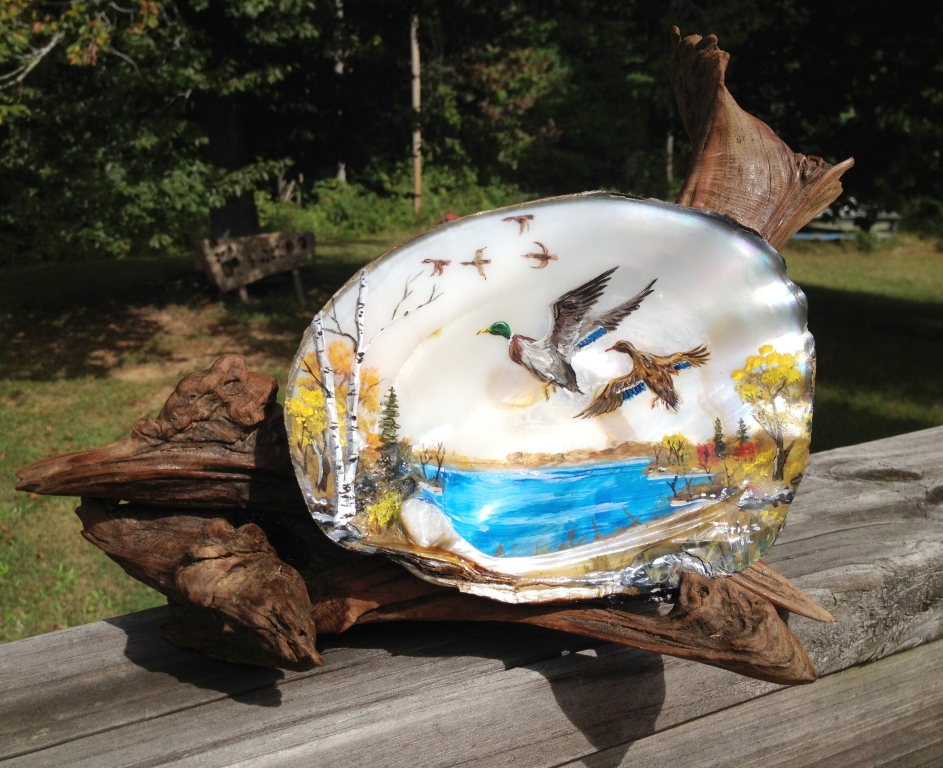 When I am not diving for mussels in the Tennessee River, a good part of my time is devoted to artwork. I have been drawing and painting since childhood and have always had a love for art. Back in 1999, my mother suggested I try painting on mussel shells. At that time the shell business was booming and there were over three thousand mussel divers in TN alone. Since washboards were a top dollar shell and the bigger ones were worth upwards of 7$ a pound, I picked the smallest, thinnest shells to paint. My first painted shells were kind of crude river scenes, often featuring a dive boat. They were an instant hit and they sold as fast as I could paint them. Over the years, as the prices of shells dropped, I realized that the larger washboard mussels made the best paintings, they often had more 'mother-of-pearl' color and a larger area to paint on. A few years ago I started mounting them on driftwood from the river to make them easier to display.
The following is a pictorial demonstration of how a shell painting is created:
The shells are harvested, in this case hand-picked by wading while the river was down in the winter. I pick the largest 'washboard' type shells to paint on then clean the meat out of them. Sometimes I find a pearl if I'm lucky! 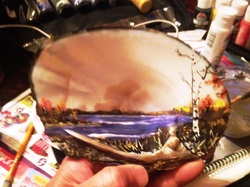 When I get back to my studio, the painting begins. One of the trickiest parts of the process is laying in the background. Since the shells are concave and rippled it is extremely hard to get the horizon straight.
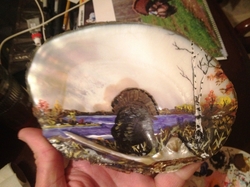 When I get the background like I want it, it's time to decide what the focal point of the piece will be. In this case a wild turkey.
Turkeys are harder than they look because of all the subtle colors and feathers. This one has shaped up pretty well! When the painting is finished, it is signed, mounted on driftwood and sprayed with a acrylic clear-coat for protection. If you would like to see more of my work, you can visit http://www.lostcreekart.weebly.com . Or you can google frizz-art and go to images. I am also on deviantArt username frizz-art. You can contact me at [email protected].
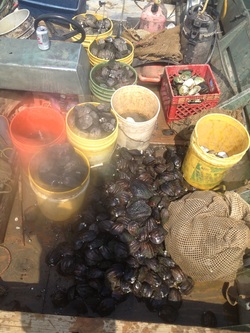 Well, this has turned out to be another unpredictable year for the mussel shell business. It started out decent enough; two shell companies open and buying, prices fairly steady, shells plentiful if you work hard. But word gets around fast, especially in the economy that we have currently. Even though the prices are lower than they have been in twenty-five years, a reduction in the number of divers has resulted in a comeback of many of the old shell beds. When word spread that a descent living could once again be made diving, several former divers have gotten back into it. This has caused the market to be quickly flooded.
Now one of the buyers has shut down because they have filled their orders, the other can't take the strain of all the new divers and has been running out of money every few days. Hopefully the market will level back out soon. I hate to say it, but I wish a lot of these 'warm water' divers would go back to their regular jobs. There are only a handful (maybe five) of us that dive year round. It is a brutal and painful job in the dead of winter. Summertime should be the time to enjoy this occupation, but that is hard to do when the influx of new divers make the market so unpredictable.
Today was another beautiful day on Kentucky Lake. It started out on the cool side, but quickly warmed up with the clear skies and bright sunshine. The water level on the lake is still at the low 'winter pool' level. I took advantage of this to walk around and pick up shells. I was surprised when the first place I checked turned out to be loaded with 'washboards', the largest type of freshwater mussel shells. During the boom years of the 90s and early 00s, washboards were selling for between 4$ and 9$ a pound depending on size. Most of the ones I found today would have easily sold for the high dollar mark in those days. I ended up with 203 washboards, that is 5 -1/2 buckets or over 250 lbs. I also harvested over 200 lbs of lake mix: three-ridges, maple leafs and pig-toes. This haul ten years ago would have brought over $2,000.
I also did my part for the future of the mussel community by throwing the smaller shells into deeper water. These small shells would be killed by the ice in the winter when the lake freezes over. They migrate into shallow water in the summer and then are left stranded when the lake levels drop in the fall.
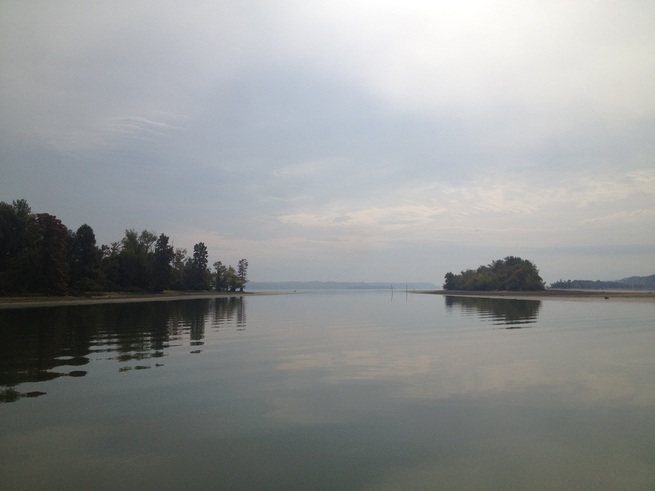 There was another calm day Wednesday with hardly a ripple on the water.
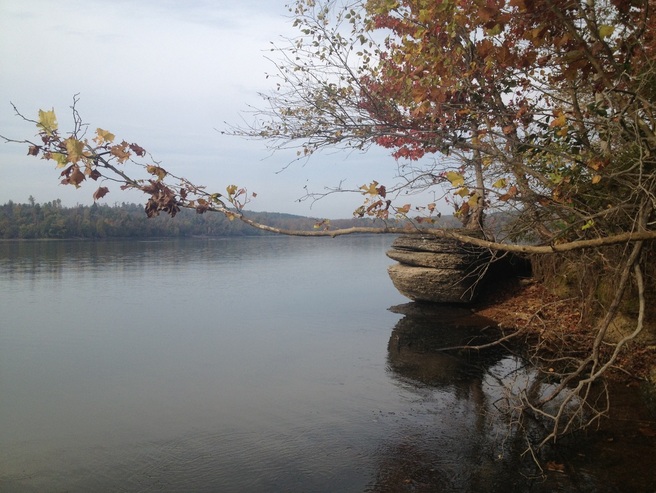 This is one of the islands I stopped at to 'toe-dig'. The fall colors combined with the beautiful weather made it a wonderful day to be outdoors. The water level remained low so I spent the day toe-digging and drinking in the glorious sights.
Today was a perfect day for toe-digging. Toe-digging is the time honored tradition of harvesting mussel shells by wading in shallow water and feeling for the shells with your feet. In the winter, the lake depth drops dramatically and mussels can be found in ankle deep water. There are only a handful of days a year that the wind is almost still on Ky Lake, and today was one of those days. It was a nice break from diving, wading around and picking up shells. The water was so calm and clear, that most of the shells I harvested today were by sight. I could look and see shells for several yards before I got to them. One of the good things about the prices being so low right now (actually about the only good thing) is that there is almost no competition out there. When the prices are good, there are divers and toe-diggers on every shallow bar on the lake. Today I didn't see one other diver on the lake. Who knows what tomorrow will bring?
In the early days of the mussel industry, the market was primarily for mother-of-pearl buttons. Until the advent of plastics in the 1930s, mother-of-pearl was the sturdiest, most beautiful and cost efficient material available for the clothing industry. As plastic gained a firm hold in the 1940s, the mussel harvest industry almost ground to a halt. It was shortly after World War II that one of America's enemies saved the freshwater shell business from extinction.
Early 1950s: a man named John Latendresse became interested in freshwater pearls and made his way south. When he found musselers (at the time basically amatuer treasure hunters and free divers) in Tennessee he offered to buy any pearls that they might find. Latendresse's passion soon led him to Japan and a new international industry was born. Japan had the first cultured pearl farms in the world, but had trouble finding high quality mother-of-pearl to implant into their oysters. To meet this need, Johnny Latendresse founded Tennessee Shell Company in Camden, Tennessee in 1954. Mussel shells from the Tennessee River soon proved to contain the highest quality mother-of-pearl in the world. This started a fresh boom in the mussel harvest game and introduced a new generation to the proffession. The Mussel Diver was born as a direct result of Latendresse's dreams and hardwork. Over the next four decades, this had an enormous impact on the economy of West Tennessee, particularly Benton Co.
Latendresse went on to found the American Pearl Company in 1961 to import Japanese cultured pearls into the U.S. This ignited another idea and passion and Johnny began a quest to gather the closely gaurded secrets of the cultured pearl. On one of his fact finding missions to Japan, Johnny was told by the CEO of a major pearl company, "We don't feel you belong in the Japanese pearl business. Mikimoto is a natural hero, we began it and we don't feel you belong in it." Latendresse snapped back with, "Henry Ford is our national hero, but look what Toyota and Honda have done with his ideas." Latendresse gathered what information he could and with over a decade of trail and era, the American cultured pearl industry was born.
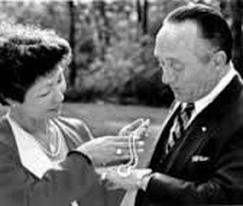
John Latendresse and his wife Chessy admiring pearls.
My father met Latendresse (dad always called him Johnny) in 1979. After four years of mussel diving in four states, my father Rayburn 'Big Frizz' Frizzell, had gained a reputation as one of, if not the best diver on the water. When he came to Benton County, Johnny contacted him and asked to buy his shells. (There is a funny story about their first meeting, but I will go into that on another blog.) A friendship and business relationship was formed that spanned two decades and was mutually beneficial. My dad soon became a buyer for Tennessee Shell and in 1984 started the first dive shop geared towards the mussel diver, Big Sandy Dive Shop. Latendresse recognized the business potential of my dad, and Rayburn soon became the head shell buyer for the company. He not only had his shell camp in Big Sandy, TN, he also had buying stations in KY, OK, AL, IL, LA, and TX. My entire family was employed at the various shell camps. My brother, Bruce Frizzell, began buying at the Big Sandy camp when he was 15. Within a couple of years he took over buying at a shell camp catering to the brailers in Kentucky. When Johnny sold Tennessee Shell in the early 90s (for a reported 10 million) my dad was head of exporting and was getting a commission of .025% on every shell shipped, which at the time amounted to 3 million pounds a year. Rayburn Frizzell sold Big Sandy Dive Shop to Tennessee Shell and retired soon after Johnny Latendresse sold the company. John Latendresse passed away in 2000. His family still owns American Pearl Company in Nashville, TN.
John Latendresse is now known as the 'Father of American Cultured Pearls', and for good reason.
My dad, Rayburn Frizzell was a jack-of-all trades during my early childhood. When I was very young he worked at a panelply factory but soon decided to try to make his fortune on his own. He started a successful car-hop restaraunt The Hut in Lexington, Tn where we lived but he was never satisfied. He became quite the entrepreneur, running everthing from package beer stores, to dairy bars to bbq pits. At one time in the early 70s he owned a convenience store, a package store and worked as a commercial fisherman, selling his fish out of his own fishmarket. About this time there was a boom in the fur trade, with european furs becoming scarce. Dad tried his hand at trapping and while looking for the best place to sell furs he heard about a man in Camden, Tn named James Peach. James changed my dad's life forever.
James Peach was another entrepreneur on a larger scale than my dad. Not only did he buy furs, he also dealt in ginseng and introduced my dad to another market; mussel shells. James told my dad that there was a lake in Oklahoma that had just been discovered to hold shells. He also told my dad that he would pay for his trip out there if he was interested in diving for him. When my dad heard that guys were making $150 and more a day he had to give it a try. That was a lot of money in 1975! Well the story turned out to be true and my dad Rayburn soon became one of the best mussel divers on the lake. He was averaging between $150 and $200 dollars a day and only getting $7 dollars for a five gallon bucket of shells. That averages out to about 14 cents a pound so he was getting between a half ton and a ton a of shells a day.
The next summer dad took me out to Wagner, OK to boat tend for him. I was 13 years old and it was the summer between seventh and eighth grade. Dad was diving out of a wooden barge at the time which was an old flat homemade boat with no sides. It was like a large raft with a motor on it. There was a winch with a boom and it would lower a steel barrel into the water. The barrel was cut in half side-ways and had holes drilled in it so it would sink. The divers would fill the barrel with a couple hundred pounds of shells and then winch it into the boat. Towards the end of the summer, my dad asked if I wanted to try diving and I said sure. He rigged me up a weight belt and tightened the mask to fit my head and gave me some quick instructions. I still remember jumping over the side of the boat for the first time, it is a little weird and scary learning to breathe through your mouth exclusively. But I was having trouble staying on the bottom so I came back up. Dad told me later that he was worried that I didn't like it, but he laughed when I spit my regulator out and said, "I need more weight, I can't stay on the bottom." I've been diving ever since.
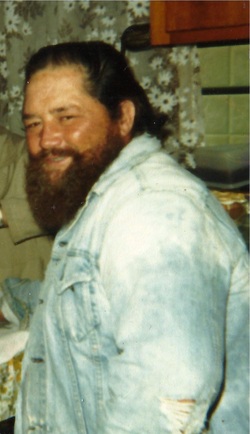 This is my dad, Rayburn 'Big Frizz' Frizzell about the time he started mussel diving.
|



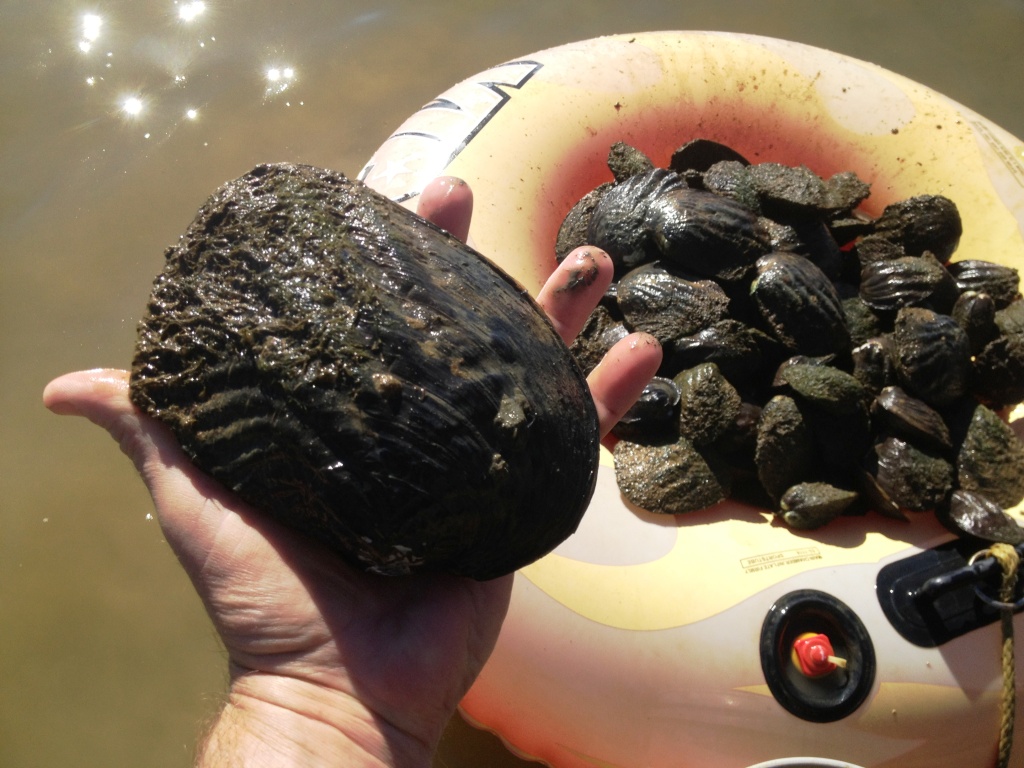
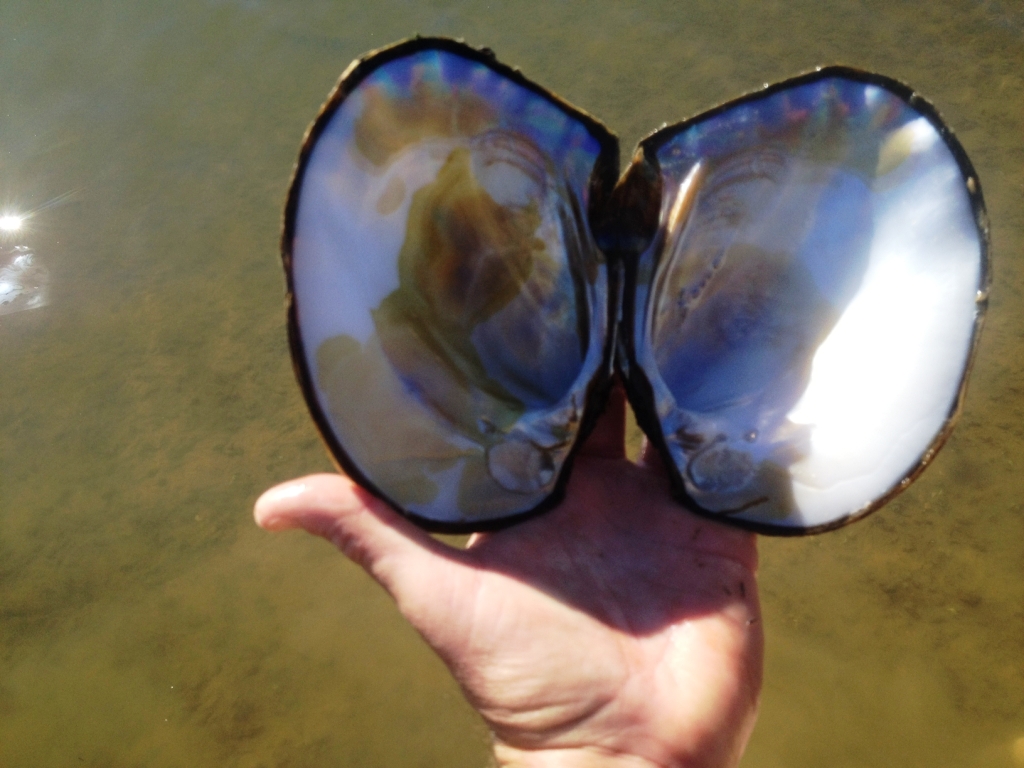
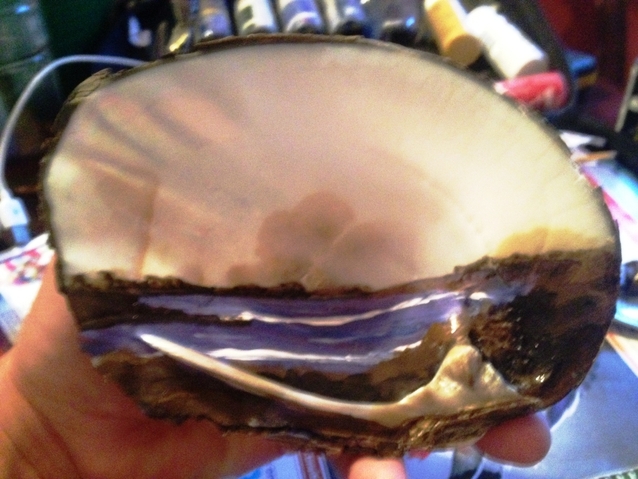
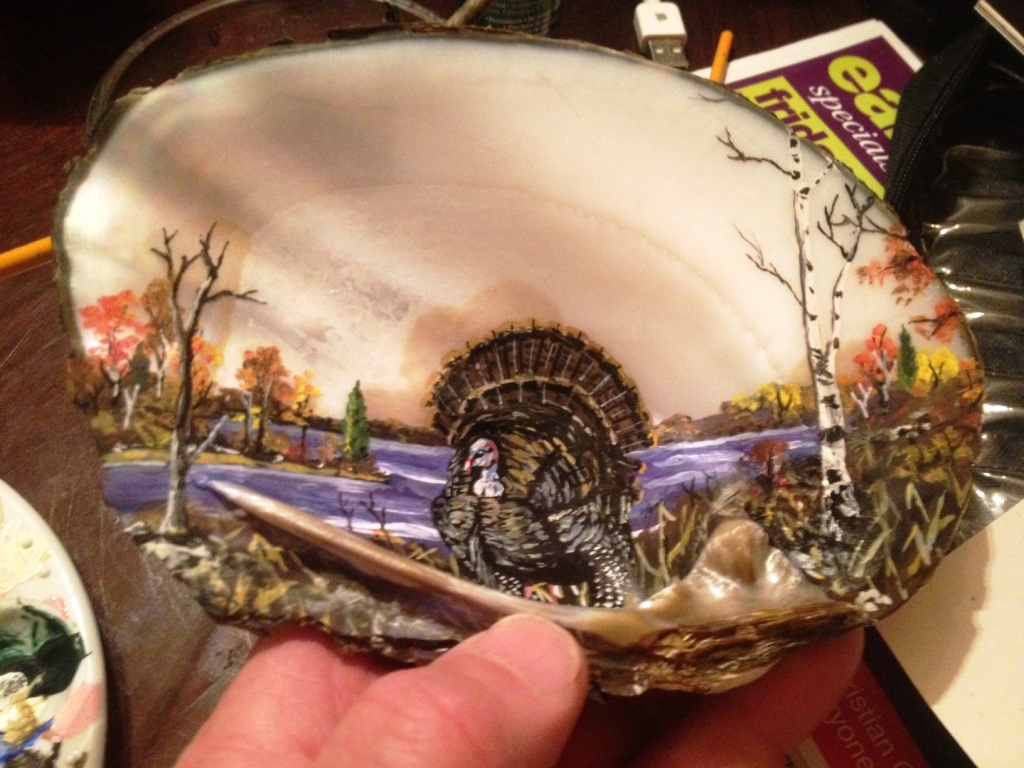
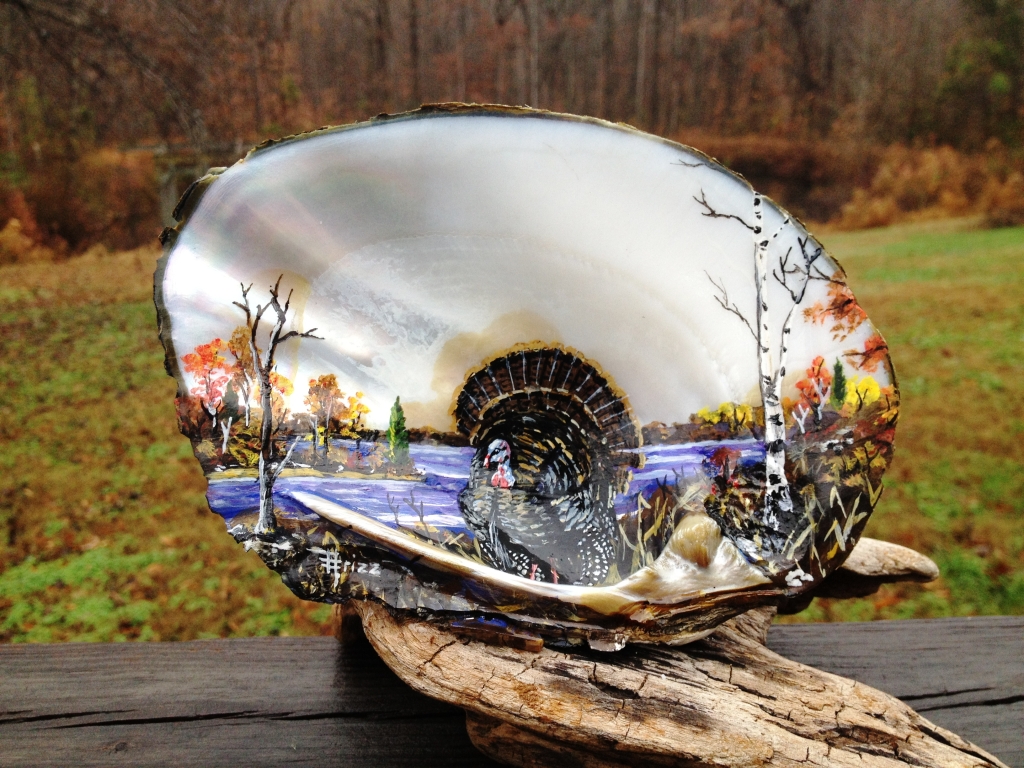

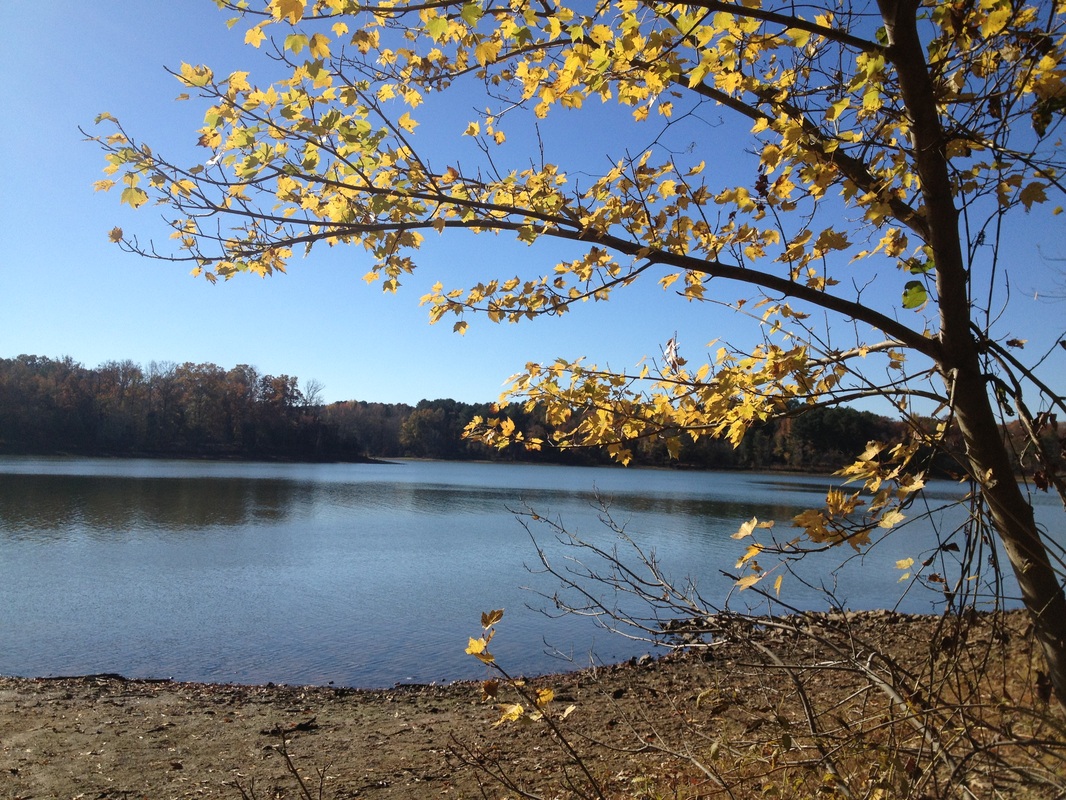
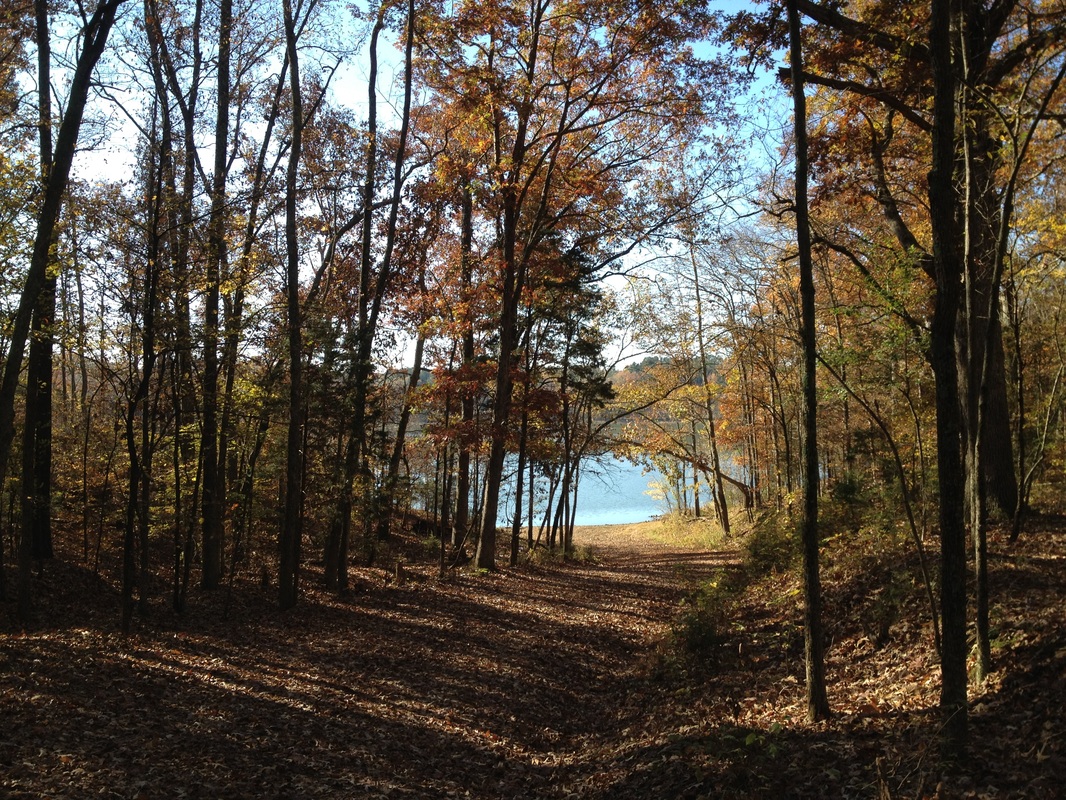
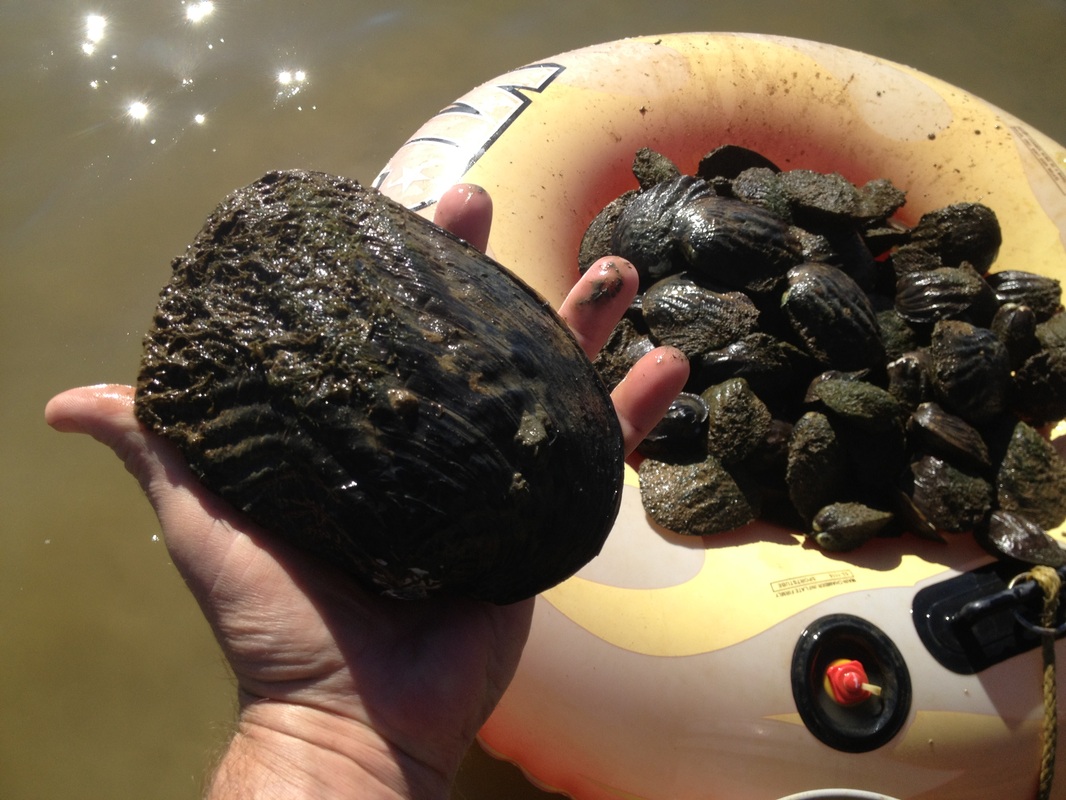
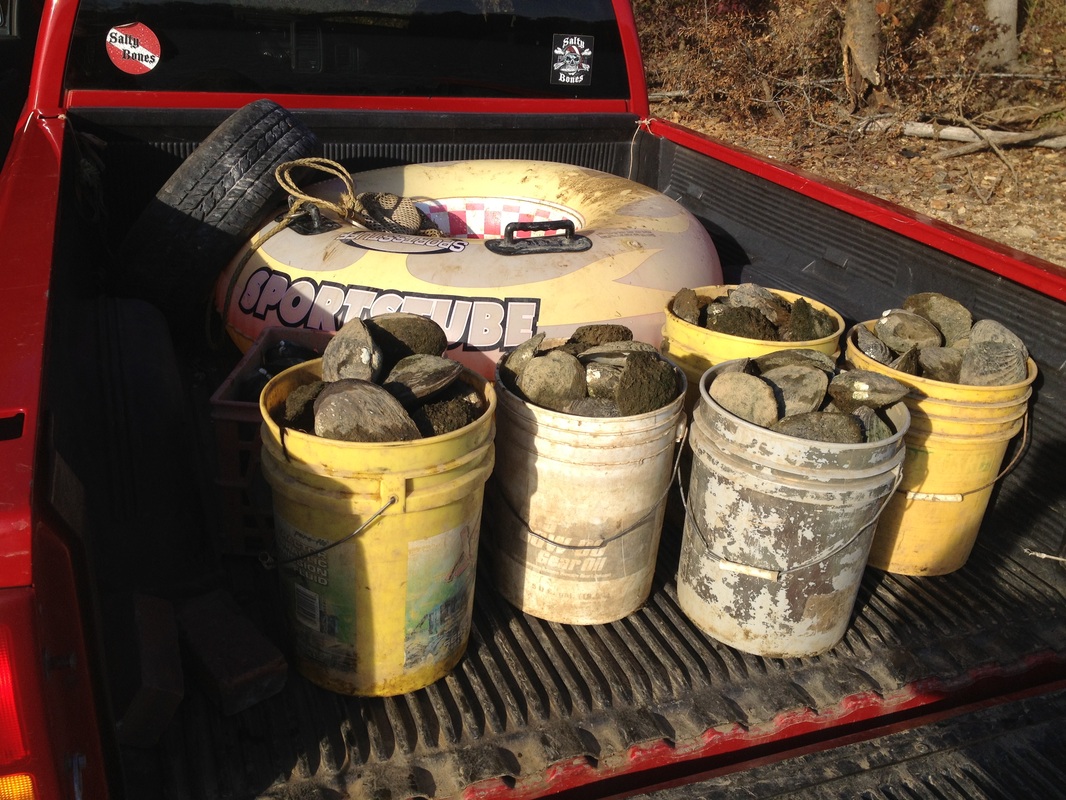


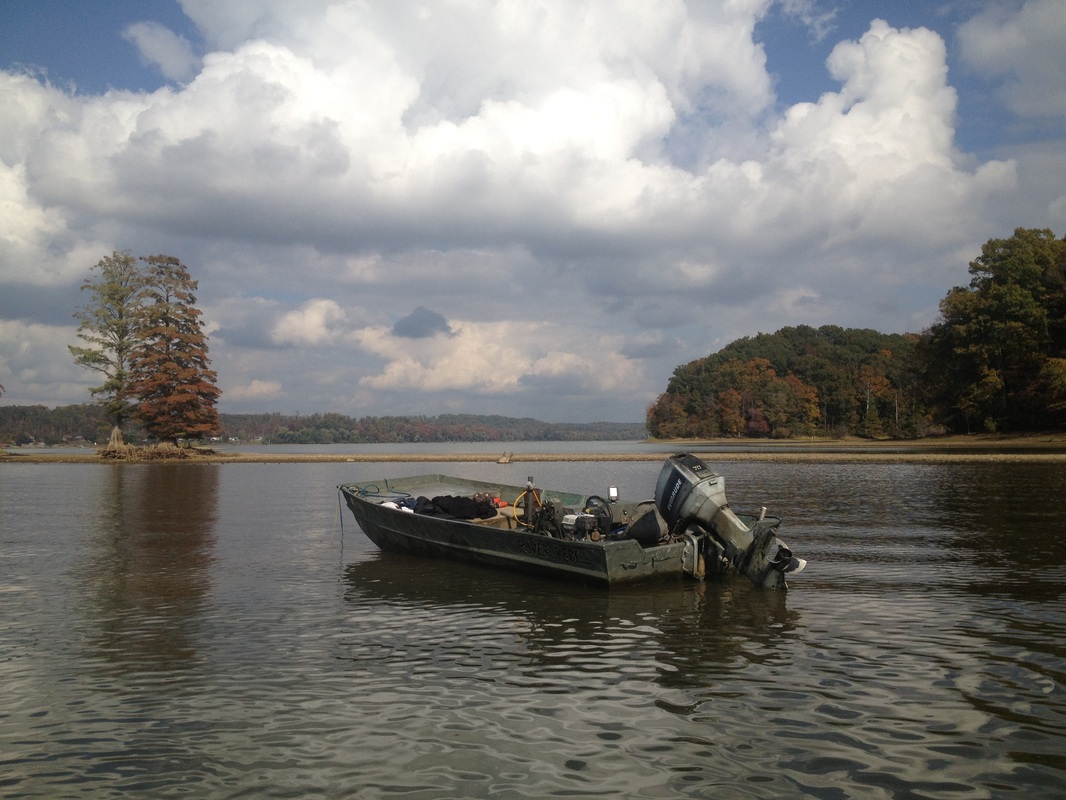
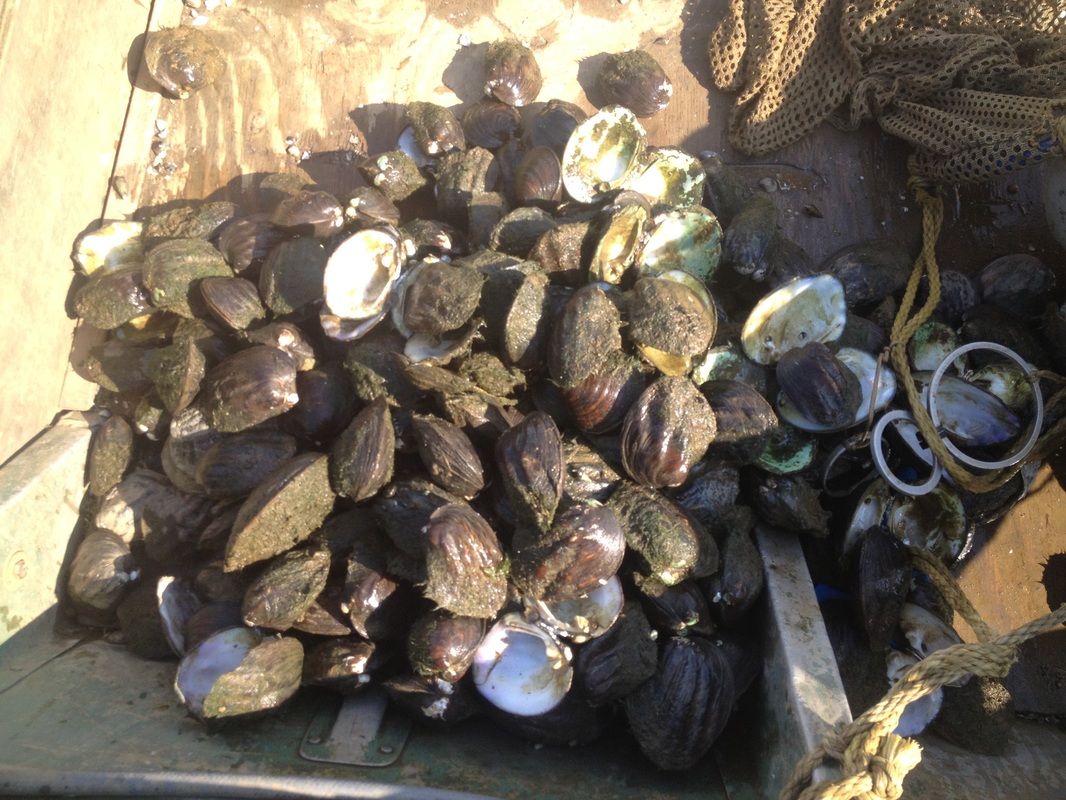
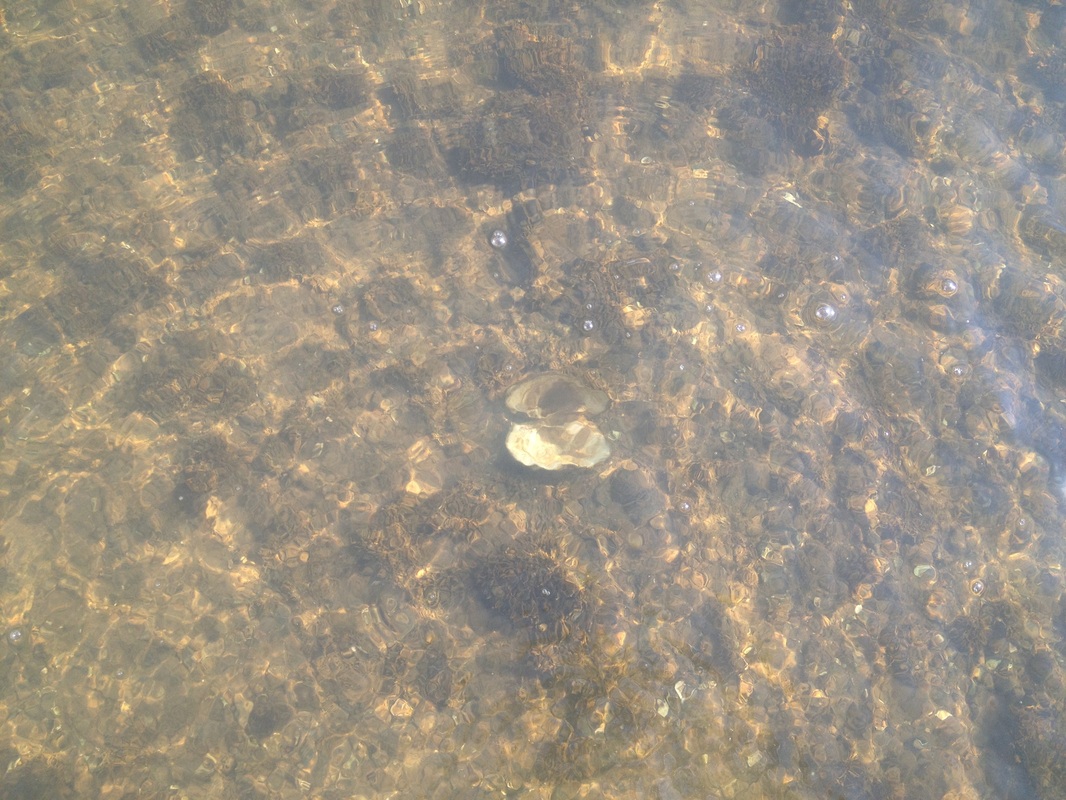
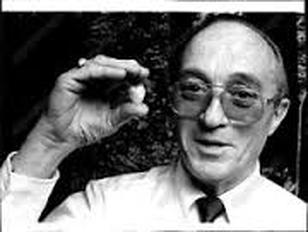


 RSS Feed
RSS Feed